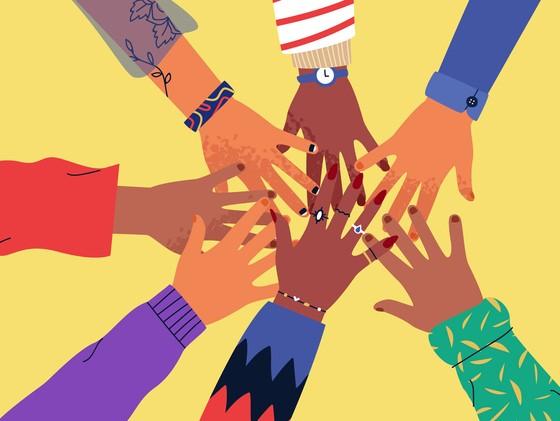We authors both live with a disability. As an academic and an honours student who dream of reaching the top, we set out to see who (with a disability) is already there. It turns out no senior leader in Australian higher education discloses having a disability on their official biography published on their employer’s website or on their LinkedIn or Wikipedia profile.
This includes all vice-chancellors, provosts and deputy vice-chancellors in Australian universities, as well as the executive leadership of sector-wide bodies the Group of 8 (Go8), Australian Technology Network (ATN), Innovative Research Universities (IRU), Regional Universities Network (RUN), SAGE Athena Swan and the Academy of Sciences. We found no disability mentioned on any profiles.
- New norms in higher education that can help disabled students long-term
- The educator’s imperative: creating intentional inclusivity in the digital classroom
- Fostering collaboration in staff training through a top-down and bottom-up approach
What message does this send to the 15 to 20 per cent of the population who live with a disability, or the up to 8 per cent of university students who have a disability, or those with a disability who work in higher education? As an academic and a student with disabilities, we can answer for ourselves. It is hard to dream of reaching the top when there is no one with a disability visible to look up to.
Lack of diversity affects the entire HE sector
Even more pressing are the impacts that this lack of diverse leadership has on the academic community as a whole. If we are not at the decision-making table to speak for ourselves, our needs can often be ignored or misinterpreted, leading to a significantly worse experience in all areas. This has the obvious ramifications of excluding us from physical spaces and impacting our learning/working experiences. But it can also extend to how disability is taught in course content, how students and staff participate in extracurricular activities, or whether training materials or workshops are relevant to our needs. All these activities could lead to improved leadership outcomes. When people with disabilities do not see themselves represented or see the value of such activities, their lack of participation takes them out of the leadership pipeline.
While we acknowledge there may indeed be leaders who live with a disability but have decided not to disclose it, others do not get this choice. Paul has a guide dog, Sean, and is a Paralympian. His disability is obvious and celebrated on his profiles. Other people with a disability, particularly invisible disabilities, can and do elect not to disclose. We personally know people with low vision, autism, mobility disabilities and other conditions who have decided not to mention their disability to their employers or colleagues for a variety of reasons, many of which are related to their career aspirations.
We are privileged to work and study at an institution that celebrates disability diversity. Nevertheless, people in the higher education sector who have disclosed their disability are more likely to encounter discrimination than to be provided with opportunities to succeed. Accordingly, a senior leader who lives with a disability, or someone aiming for such a role, may feel reluctant to disclose.
Pathways to leadership need sector-wide reform
Changing the discussion around disability requires a societal shift. Despite the steady increase in the numbers of students with disabilities graduating from universities, Australia’s employment rate for people with disabilities has not changed in almost 30 years. Yet many students with disabilities go on to complete higher degree research and enter academia. Even though they and academics with a disability confront considerable barriers to success, we are here now and keen to take up leadership positions.
This is where higher education can make a difference; the sector can create pathways to leadership and celebrate ability diversity.
Institutions need to take the time to understand accessibility and attitudinal barriers to leadership. As a start, they can actively promote a culture that celebrates rather than problematises diversity, and adopt a strategic approach to widening participation.
The movement to create disability leadership pathways can learn from other diversity success stories. Leadership programmes and other initiatives have, for example, helped increase the number of women in senior leadership roles, validating strategy-level commitments to enact change. Sector-wide groups and universities must develop strategic initiatives that empower people with disabilities. An obvious first step is to create groups that tackle this lack of disability visibility and have people with disabilities lead and dominate these groups. Then, fund and link them with established senior leaders.
Creating inclusive, diverse universities
When people with disabilities are empowered to lead higher education initiatives, the results can create more inclusive universities. The University of Queensland has a Disability Inclusion Group that helps draft and monitor the university’s strategic disability action plan. The chair of this group sits as an observer on the Senate subcommittee for equity, diversity and inclusion and on the academic board. Creating structures of disability inclusion not only enhances the capacity of the institution to champion ability equality but provides direct leadership opportunities and peer connections for the academics and students with disabilities associated with these initiatives.
Higher education can no longer stand by as competent, intelligent people with disabilities are absent from or invisible in leadership positions. Not only do organisations lose significant opportunities for diverse thought leadership and improved representation of staff and student cohorts but they fail obligations to include persons with disabilities.
The higher education sector needs to do better and become disability champions of change.
Paul Harpur is an associate professor and Future fellow and Brooke Szücs is a research assistant, both at the TC Beirne School of Law at the University of Queensland. This research was made possible by the Australian Research Council funding the Future Fellowship FT210100335.
If you would like advice and insight from academics and university staff delivered direct to your inbox each week, sign up for the Campus newsletter.




comment1
(No subject)